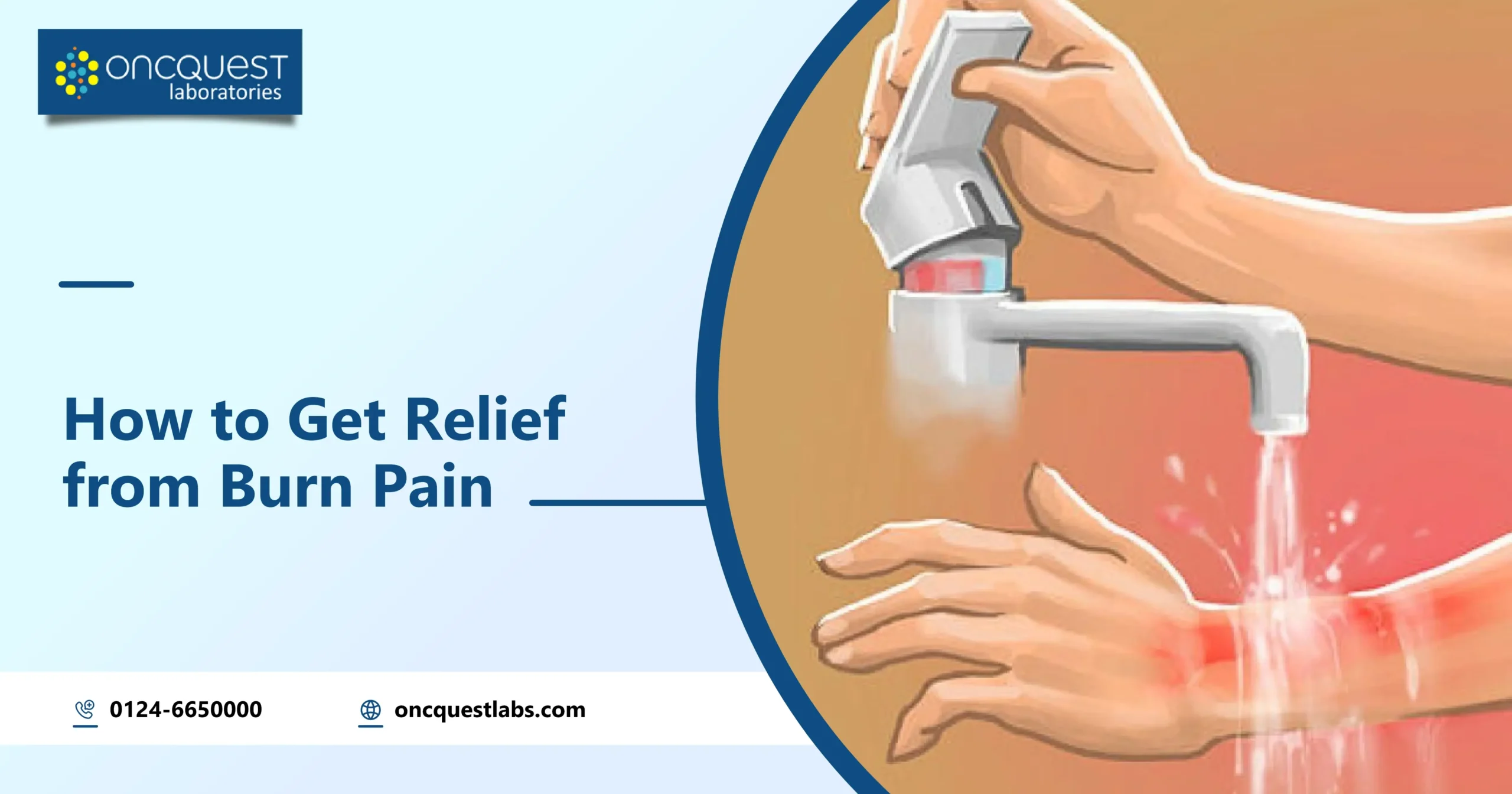Every burn injury, whether mild or severe, brings with it a unique level of discomfort and pain. Coping with burn pain is a crucial aspect of recovery, and finding effective relief is essential for both physical and emotional well-being. In this guide, we’ll explore various strategies and methods to alleviate burn pain, ranging from immediate first aid to long-term recovery. Whether you’ve experienced a minor burn in the kitchen or are navigating the challenges of a more serious injury, understanding how to manage and find relief from burn pain is a vital step on the path to healing. Join us on this journey as we delve into practical solutions, medical insights, and self-care techniques to help you find comfort amidst the flames of burn pain.
Contents
Understanding Burn Severity
Burn injuries are classified into different degrees, each indicating the extent of damage to the skin and underlying tissues. Recognizing the severity of a burn is crucial for proper care and treatment. Let’s break down the degrees of burns:
1. First-Degree Burns:
- Superficial burns affecting only the outer layer of the skin.
- Common symptoms include redness, mild swelling, and pain.
- Typically heal on their own without significant medical intervention.
2. Second-Degree Burns:
- Affecting both the outer layer (epidermis) and part of the underlying layer (dermis).
- Symptoms include blistering, intense pain, redness, and swelling.
- May require medical attention for proper care and to prevent infection.
3. Third-Degree Burns:
- Severe burns that extend into the deeper layers of skin, potentially reaching muscles and bones.
- Skin may appear charred or white, and nerve endings may be damaged, leading to numbness.
- Immediate medical attention is critical for third-degree burns.
4. Fourth-Degree Burns:
- Extending beyond the skin to damage underlying structures such as muscles, tendons, or bones.
- These burns require urgent medical intervention and may involve complex treatments like surgery.
Assessing burn severity involves considering factors like the size of the burn, its location, and the age and overall health of the individual. It’s important to note that self-diagnosis may not always be accurate, and seeking professional medical advice is advisable, especially for second-degree burns and beyond. Understanding the degree of a burn lays the foundation for appropriate care and helps ensure the best possible outcome in terms of both healing and pain management.
Immediate First Aid for Burn Injuries
When dealing with a burn, the initial moments are crucial for minimizing damage and providing relief. Follow these immediate first aid steps:
1. Safety First:
- Ensure your safety and the safety of the victim.
- Move away from the source of the burn, especially if it involves fire or hot surfaces.
2. Cooling the Burn:
- For first-degree burns or small second-degree burns, gently run cool (not cold) water over the affected area for about 10-20 minutes.
- Avoid using ice, as it can further damage the tissue.
3. Remove Tight Items: If the burn is on an extremity and not caused by a chemical, remove tight clothing or jewelry near the burn area to prevent swelling.
4. Protect the Burn: Cover the burn with a clean, non-stick bandage or cloth to protect it from air and potential contamination.
5. Avoid Home Remedies: Refrain from using butter, oil, or other home remedies, as they can trap heat and worsen the burn.
6. Over-the-Counter Pain Relief: If necessary, consider taking over-the-counter pain relievers like acetaminophen or ibuprofen, following proper dosage guidelines.
7. Seek Medical Attention: For severe burns (second-degree and above), burns on the face, hands, feet, genitals, or major joints, or burns caused by chemicals or electricity, seek immediate medical attention.
Remember, while first aid is crucial, professional medical assessment is essential for severe burns. If in doubt, it’s always safer to seek medical assistance promptly.
Over-the-Counter (OTC) Medications for Burn Pain
When managing burn pain at home, certain over-the-counter medications can provide relief. Here are some options to consider:
1. Acetaminophen (Tylenol):
- A pain reliever that can help reduce mild to moderate burn pain.
- Follow the recommended dosage guidelines and avoid exceeding the maximum daily limit to prevent liver damage.
2. Ibuprofen (Advil, Motrin):
- An anti-inflammatory medication that not only reduces pain but also helps alleviate inflammation and swelling.
- Take with food and follow the recommended dosage, especially if you have a history of stomach issues.
3. Naproxen (Aleve):
- Another nonsteroidal anti-inflammatory drug (NSAID) that can be effective in managing burn-related pain and inflammation.
- Should be taken with food, and the dosage should be in accordance with the provided instructions.
It’s important to note that individuals with certain medical conditions or those taking other medications should consult with a healthcare professional before using OTC pain relievers. Additionally, these medications primarily address pain symptoms and may not accelerate the healing process of the burn itself. If burn pain persists or worsens, or if there are
Home Remedies for Burn Pain
In addition to over-the-counter medications, several home remedies can help soothe burn pain and promote healing. Here are some effective options:
1. Aloe Vera:
- Apply aloe vera gel directly to the burn for its cooling and anti-inflammatory properties.
- Ensure the gel is pure and does not contain added chemicals or colorants.
2. Honey:
- Dab a thin layer of honey on the burn to harness its antibacterial and wound-healing properties.
- Use medical-grade honey for optimal results.
3. Cold Compress:
- Apply a cold compress or a clean, cool cloth to the burn to reduce swelling and provide instant relief.
- Avoid using ice directly on the skin to prevent frostbite.
4. Tea Bags: Cool, damp tea bags (black or green tea) can be gently applied to the burn for their tannic acid, which may help soothe pain and promote healing.
5. Oatmeal Bath: Soak in an oatmeal bath to relieve pain and itching. Colloidal oatmeal is available in most drugstores for this purpose.
6. Coconut Oil: Apply a thin layer of coconut oil to the burn to moisturize the skin and potentially aid in healing.
7. Vitamin E: Puncture a vitamin E capsule and apply the oil to the burn to promote skin repair.
Remember, these home remedies are suitable for minor burns and may not be sufficient for more severe injuries. If you have concerns about the burn’s severity or if it covers a large area, it’s crucial to seek professional medical advice. Additionally, if any remedy causes irritation or worsens the condition, discontinue use and consult with a healthcare professional.
Prescription Medications for Burn Pain
For more severe burns or cases where over-the-counter options prove insufficient, healthcare professionals may prescribe medications to manage pain and facilitate the healing process. Here are some prescription medications commonly used for burn injuries:
1. Prescription Pain Relievers:
- Stronger pain medications such as opioids (morphine, oxycodone) may be prescribed for severe burn pain.
- Usage is closely monitored due to the potential for dependence and side effects.
2. Topical Antibiotics:
- Prescription-strength topical antibiotics can prevent infection in second-degree burns.
- They are applied directly to the burn and may be combined with other topical treatments.
3. Silver Sulfadiazine Cream: Often used for second-degree burns, this cream contains silver to prevent infection and promote healing.
4. Anti-Inflammatory Medications: Prescription-strength NSAIDs or corticosteroids may be recommended to reduce inflammation and pain associated with burns.
5. Antidepressants or Anticonvulsants: In some cases, medications like amitriptyline or gabapentin may be prescribed to help manage nerve pain associated with burns.
6. Tetanus Shot: If the burn results from a puncture wound or contamination, a healthcare professional may recommend a tetanus shot to prevent infection.
It’s crucial to take prescription medications exactly as prescribed by the healthcare provider and to communicate any concerns or side effects promptly. Additionally, a healthcare professional will assess the burn regularly to adjust the treatment plan as needed. Severe burns often require a multidisciplinary approach, involving medications, wound care, and potentially surgery, so close medical supervision is essential for optimal recovery.
Prevention Tips for Burn Injuries
1. Kitchen Safety:
- Use caution when cooking and handling hot surfaces, pots, and pans.
- Keep pot handles turned inward to prevent accidental spills.
2. Electrical Safety:
- Avoid overloading electrical outlets and use appliances according to their guidelines.
- Check electrical cords for damage and replace them if needed.
3. Fire Safety:
- Install smoke detectors in key areas of your home and test them regularly.
- Have a fire escape plan in place, and practice it with family members.
4. Hot Water Safety:
- Set your water heater to a safe temperature to prevent scalds.
- Always check bathwater temperature before entering, especially for young children.
5. Childproofing:
- Keep hot beverages and foods out of reach of young children.
- Install stove guards to prevent children from reaching burners.
6. Proper Use of Appliances:
- Follow safety guidelines for the use of heating pads, irons, and other heat-producing devices.
- Turn off and unplug appliances when not in use.
7. Caution with Chemicals:
- Read and follow instructions on household chemical products.
- Wear protective gear when handling potentially hazardous substances.
8. Grill Safety:
- Use grills outdoors, away from structures, and never leave them unattended.
- Keep children and pets at a safe distance while grilling.
9. Sun Safety:
- Use sunscreen to prevent sunburn, especially during prolonged exposure.
- Avoid outdoor activities during peak sunlight hours.
10. Educate and Supervise:
- Educate family members, especially children, about burn prevention.
- Supervise children around potential burn hazards.
11. First Aid Knowledge:
- Learn basic first aid for burns, including proper cooling techniques.
- Have a well-stocked first aid kit at home.
By incorporating these prevention tips into your daily life, you can significantly reduce the risk of burn injuries and create a safer environment for yourself and your loved ones. Awareness and proactive measures are key to preventing burns and ensuring a secure living space.
Conclusion
In the journey of navigating burn injuries, finding relief from pain and facilitating the healing process is paramount. From understanding the severity of burns to immediate first aid, over-the-counter solutions, home remedies, and prescription medications, we’ve explored a comprehensive approach to managing burn pain.
Remember, the severity of a burn determines the appropriate course of action, and seeking professional medical advice for moderate to severe burns is crucial. While over-the-counter medications and home remedies can provide initial relief for minor burns, prescription medications may be necessary for more severe cases.
Preventing burn injuries through safety measures and awareness is equally important. By adopting kitchen safety practices, electrical precautions, and proper handling of hot substances, you can significantly reduce the risk of burn incidents.
In conclusion, whether you’re treating a minor burn at home or supporting someone with a more severe injury, a holistic approach involving immediate care, medical guidance, and preventive measures contributes to a smoother healing process. Always prioritize safety, stay informed, and don’t hesitate to consult with healthcare professionals for personalized advice tailored to the specific circumstances of the burn injury.





